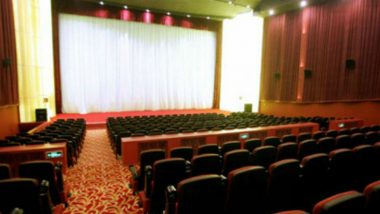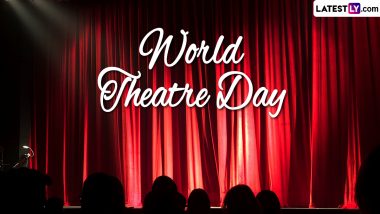"I regard the theatre as the greatest of all art forms, the most immediate way in which a human being can share with another the sense of what it is to be a human being." -Oscar Wilde.
A theatre is an art form that comprises live performers, actors, props, and more. Every year on March 27, World Theatre Day is observed to generate awareness about the importance of theatre in our life.
The first plays took place in the Theatre of Dionysus, situated in the Acropolis in Athens during the beginning of the 5th century. However, theatres became so popular that they spread all over the world.
About World Theatre Day
World Theatre Day was initiated in 1961 by the International Theatre Institute( ITI). Various national and international theatre events are organized to mark this occasion. One of the most important of these is the circulation of the World Theatre Day Message through which a figure of world stature shares his or her reflections on the theme of Theatre and a Culture of Peace.
Traditional Theatre in India
Theatre is an ancient aesthetic practice in India. Surviving play texts and treatises all suggest that theatre existed in the Indian subcontinent from the dawn of civilization.
Living traditions occupy a prominent place in the Indian social system. There can be no doubt about the fact that traditional art forms reflect the ideals of the society, its determination to survive, its ethos, emotions, fellow-feelings, and so on reflecting the common man’s social attitudes and perceptions.
Traditionally the language of ordinary people has an element of creativity. This kind of creativity is spontaneous, emerging from the circumstances.
Famous forms of Traditional Theatre
Bhand Pather, the traditional theatre form of Kashmir, is a unique combination of dance, music, and acting. Satire, wit, and parody are preferred for inducing laughter.The actors are mainly from the farming community, the impact of their way of living, ideals and sensitivity is discernible.
Nautanki is usually associated with Uttar Pradesh. The most popular centres of this traditional theatre form are Kanpur, Lucknow, and Haathras. The meters used in the verses are: Doha, Chaubola, Chhappai, Behar-e-tabeel. There was a time when only men acted in Nautanki but nowadays, women have also started taking part in the performances.
Raasleela is based exclusively on Lord Krishna legends; it is believed that Nand Das wrote the initial plays based on the life of Krishna. In this theatre form, the dialogues in prose combined beautifully with songs and scenes from Krishna's pranks.
Fairs in honour of gods, or religious rituals and ceremonies have within their framework musical plays are known as Jatra. This form was born and nurtured in Bengal. The earlier form of Jatra has been musical. Dialogues were added at a later stage.
Bhaona is a presentation of the Ankia Naat of Assam. In Bhaona cultural glimpses of Assam, Bengal Orissa, Mathura and Brindavan can be seen. The Sutradhaar or narrator begins the story, first in Sanskrit and then in either Brajboli or Assamese.
Tamaasha is a traditional folk theatre form of Maharashtra. It has evolved from the folk forms such as Gondhal, Jagran, and Kirtan. Unlike other theatre forms, in Tamaasha the female actress is the chief exponent of dance movements in the play. She is known as Murki.
Krishnattam, folk theatre of Kerala, came into existence in the middle of 17th century.A cycle of eight plays are performed for eight consecutive days. The episodes are based on the theme of Lord Krishna depicting the victory of good over evil.
Modern Indian theatre
Modern Indian theatre has a legacy that is influenced by and draws inspiration from various sources. Modern theatre, or historically, what can be clearly identified as the Western proscenium style of theatre, was not introduced in India before the late eighteenth century at the time of the consolidation of the British Empire in various parts of India. It was through the British that Western proscenium-style theatre reached Indian shores.
From the 1850s, a number of Indian theatre enthusiasts on their own private endeavors staged their own plays, in their respective languages not only in Calcutta but also in Bombay, and several parts of North and South India.
Later the commercial, urban, Western-style theatre industry was finding itself stuck within the confines of the theatre auditorium and plays were becoming commodities for sale, allowing the winds of commerce to decide the future of the industry.
In India, despite the popularity of multiplexes, theatres, and other avenues of entertainment, the theatre continues to thrive, through dramas, street plays, and more, especially in the college circuit.
The rich chronicle of Indian theatre unveils the verity that theatre in India was always an important part of the rich Indian culture and tradition and is still the same. Digital platforms definitely cannot replicate that effect of stage theatre.
(The above story first appeared on LatestLY on Mar 27, 2021 10:18 AM IST. For more news and updates on politics, world, sports, entertainment and lifestyle, log on to our website latestly.com).













 Quickly
Quickly




















